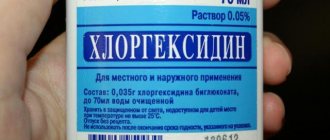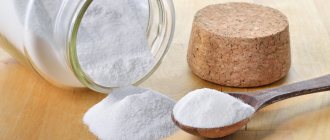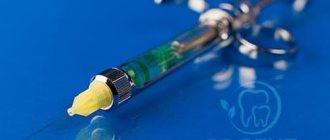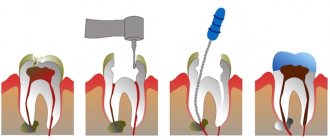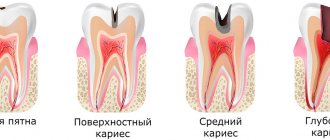Characteristics of the drug
Chlorhexidine, or a solution of chlorhexidine bigluconate, at a concentration of 0.5% -1% is an effective remedy for emergency protection against pathogenic microflora. The disinfectant is effective in preventing STDs in the first two hours after unsafe sexual intercourse. It is also great for a home first aid kit: it disinfects damaged skin, fights viruses, gram-positive, gram-negative microbes and fungal infections. In addition, Chlorhexidine can be used in complex therapy during various diseases, for example, urethritis.
Those who want to protect themselves in case of sexually transmitted infections often have a question: should I buy Miramistin or Chlorhexidine? What is better for preventing STDs and why is Miramistin 20 times more expensive? From a medical point of view, these drugs belong to the same class of antiseptics, both are quite good at disinfection. However, the active ingredients in them are different, although there is an opinion that they are one and the same. Miramistin has a wider spectrum of effects, a barely noticeable taste, does not burn the skin and mucous membranes and is used in venereology, urology and other areas. Sexually transmitted diseases are often treated with therapy that includes the use of an antiseptic.
Purposes of the procedure
Instillation of the bladder is carried out if there are several indications: they are associated not only with the presence of an inflammatory process, but also with identified tumors in the bladder, both in men and women.
In particular, procedures are prescribed to suppress the infectious process when exposed to pathogenic microflora. Manipulation is recommended in the presence of pathologies that are difficult to treat therapeutically:
- cystitis;
- urethritis;
- prostatitis;
- tumors;
- genitourinary infections.
Most instillations are performed for patients with chronic diseases. Acute forms are treated more successfully and faster. Malignant tumors identified by biopsy results are treated with drugs such as cytostatics and vaccines.
Indications and contraindications for use
For more than sixty years, Chlorhexidine has been used in the treatment of diseases, as well as for the treatment of medical instruments, and demonstrates high effectiveness in the prevention of STDs. Indications for use:
Chlorhexidine demonstrates high effectiveness in preventing STDs
- treatment of oral infections;
- disinfection of the hands of medical workers and food industry workers;
- antiseptic treatment of wounds, burns, purulent surfaces, acne, damaged by condylomas due to papillomavirus;
- gargling for ENT or oral diseases;
- prevention of sexually transmitted diseases.
Chlorhexidine should be used with caution: high concentrations of the substance will cause burns. The drug perfectly disinfects, so you should always keep in mind that the substance is potent and carries a certain danger. You don’t need to use it too often, as this will kill the beneficial bacteria on your skin. Under no circumstances should you put it in your eyes or swallow it. Be also prepared for staining of the enamel when rinsing your mouth, however, this is reversible.
Be careful when using for children. An antiseptic is not just water.
Contraindications:
- individual sensitivity;
- dermatitis;
- dry skin;
- age up to 12 years.
The question also arises, does it protect against HIV and really serious illnesses?
Which STDs does it help and does not help against?
As already mentioned, the drug helps with urgent disinfection. After two hours, it is already pointless to treat the genitals and it is worth taking other measures. An antiseptic solution will not save you from all diseases, but it will be a good help in preventing the following diseases:
An antiseptic solution will not save you from all diseases, but it will be a good help
- trichomoniasis;
- gonorrhea;
- chlamydia;
- syphilis;
- herpes;
- pediculosis.
Does Chlorhexidine help against STIs such as HIV? Unfortunately, it is impossible to protect the body by treating the genitals from the human immunodeficiency virus. In order to prevent AIDS, the solution is used to disinfect surfaces and instruments in medical institutions. As for the treatment of other diseases, Chlorhexidine as a douching agent is prescribed to women with ureaplasma and mycoplasma. You can find good reviews about such therapy among those who were cured the first time.
Speaking about whether an antiseptic helps against HIV, we can recall another sexually transmitted virus - HPV. Can human papillomavirus be cured with Chlorhexidine? No, the drug is not effective in treating HPV and will not help against warts or papillomas. However, they can quite successfully disinfect inflamed papillomas so that another infection does not enter the body.
Chlorhexidine also kills syphilis, but it all depends on when to use it. Treponema pallidum dies instantly in the solution, so syphilis can be prevented if the drug is used in the first two hours. With gonorrhea, certain subtleties also arise: Chlorhexidine may not cope with all gonococci due to the large number of secretions from the infectious partner.
Chlorhexidine for urethritis
Chlorhexidine can help with urethritis. The product is used as part of a complex treatment of inflammatory processes in the urinary tract. 2-3 ml of a 0.05% chlorhexidine solution is injected into the urethra 1-2 times a day. The course of treatment is 10 days, procedures are carried out every other day.
The product is available in different forms
Memo for patients
Before performing the procedure, the patient prepares. The doctor prescribes basic laboratory tests, which include collecting urine and blood. Afterwards, a detailed study of the patient’s bladder condition is carried out using cystoscopy. If, based on the results of the examination, no contraindications are identified in the patient, medication is prescribed. The manipulation is carried out at a strictly specified time by a doctor, both under the compulsory medical insurance policy and in private clinics in Yekaterinburg: prices must be found in a specific medical institution. Before instillation, the patient undergoes hygiene procedures.
Instructions for use
The product is available in different forms: solution, suppositories and spray for external use (alcohol) 0.5%. Each form has its own method of application.
Solution for local and external use (bigluconate) 0.05, 0.2, 1, 5%
No need to dilute with water. Should not be heated. When treating wounds and burns, irrigation is recommended 2-3 times a day for up to 3 minutes. When douching, up to 10 ml is injected into the vagina for 3 minutes. You can make cotton swabs soaked in antiseptic and apply similar therapy for a week.
To prevent STDs after casual sexual intercourse, it is necessary to rinse the urethra with Chlorhexidine. The product can be administered either using the spout of the original container or with a urological syringe. Men inject 2-3 ml of solution into the urinary canal, women - 1-2 ml into the urinary canal and 5-10 ml or 1 suppository into the vagina. In addition to this, it is advisable to disinfect the skin areas around the genitals.
Lavage can be done in a hospital or at home, but in this case you should carefully read the instructions to know how to rinse the urethra correctly and painlessly.
Vaginal suppositories 8 mg and 16 mg
The suppositories are removed from the individual packaging and inserted into the vagina in a lying position. Take one suppository twice a day for 7 to 10 days. Suppositories are also prescribed as preventive measures before childbirth.
Side effects and burning sensation
When using Chlorhexidine, allergic reactions, itching and burning in the urethra or vagina, rash and dry skin, and a sticky feeling are possible. If used too often, you can burn the mucous membrane. On the Internet you can find many questions from men who experienced discomfort and pain after infusion of the product. The reason for this is individual intolerance, too much of the administered substance, prolonged retention of it inside, and so on.
Do not forget about other, much more effective means of protection against STDs than hasty treatment with an antiseptic. Putting on a condom in advance is easier and safer than installations with the risk of burning the urethra if you do not know how to do them correctly and, moreover, are in a state of stress due to a possible infection.
Drug prevention of sexually transmitted diseases
Emergency drug prevention of sexually transmitted diseases
includes the use of local antiseptics and systemic drugs.
Which destroy the corresponding pathogenic microorganisms.
Local means for drug prevention
Local agents belong to the pharmacological group of antiseptic drugs.
They affect any type of pathogenic microorganisms, leading to their death.
chlorhexidine for the prevention of sexually transmitted diseases
Chlorhexidine is often used to prevent sexually transmitted diseases.
It is an antiseptic solution.
Which is applied to the external genitalia after urination (urine mechanically flushes pathogenic microorganisms from the mucous membrane of the urethra) and their toilet with detergents for intimate hygiene.
The genitals can be treated with a cloth soaked in a 0.05% chlorhexidine solution or rinsed in a vessel filled with the solution.
This remedy can be combined with the drug Miramistin, which significantly increases the effectiveness in destroying various pathogenic microorganisms.
It is important to carry out such preventive treatment of the genital organs with local antiseptics for a period of time no more than 2 hours after unprotected sexual intercourse.
After casual sexual intercourse, you should immediately wash your genitals and the skin around them with warm water and soap.
After this, wipe the skin with a towel and disinfect it, as well as the mucous membranes, with an antiseptic solution.
Along with external treatment of the genitals, it is necessary to inject the solution into the urethra - for this, the tip equipped with an antiseptic bottle is inserted into the urethra and a few (5-10 ml) of the solution are poured.
After that, pinch the gap with your fingers for 1-2 minutes, after which the solution is released out by gravity.
This treatment reduces the likelihood of developing bacterial and fungal sexually transmitted infections - ureaplasmosis, chlamydia, gonorrhea, syphilis, and thrush.
However, it does not protect against infection with Trichomonas and viruses.
To prevent them, other preventive measures are necessary.
Betadine suppositories are used as intravaginal means of emergency prevention of sexually transmitted diseases, which have a complex antibacterial and antifungal effect.
Tablets for the prevention of sexually transmitted diseases
Drug prevention includes the use of systemic drugs in the form of tablets or solution for parenteral administration (injection).
These medications include antibiotics, antiherpetic medications, HIV prevention medications, and anti-trichomoniasis medications.
For more reliable prevention of the development of sexually transmitted diseases and STDs, systemic medications are used - antibiotics, antiviral and antiprotozoal agents.
In most cases, the preventive pharmacotherapy program involves taking broad-spectrum antibiotics, antiviral drugs (Panavir) along with immunomodulators (Immunomax, interferon and its analogs) and anti-trichomoniacal drugs (Trichopol, metronidazole and their analogs).
Pharmacies sell a special, ready-made set of tablets that provide a complex antimicrobial effect on the body for the purpose of preventive treatment of sexually transmitted infections.
External treatment of the genitals makes sense only in the first few hours after sexual intercourse; at a later date it becomes meaningless.
Systemic administration of drugs can be effective in the first two days after intimate intercourse; then the drugs will not suppress an already developed infection.
If it is impossible or unwilling to carry out antiseptic treatment of the genitals on your own, you can contact special medical centers that provide emergency prevention services for sexually transmitted diseases.
There, the doctor will examine the patient on a gynecological chair, treat the genitals with antiseptic solutions and medications, and also prescribe a preventive treatment regimen that will prevent the development of diseases.
After this, the doctor will provide the patient with a sterile gauze pad, which he will put in his underwear to prevent contact of the already treated genitals with underwear, which may contain pathogenic microbes.
It should be noted that none of the local antiseptic drugs can provide protection against viral infection.
Therefore, preventive methods are aimed only at reducing the activity of the virus and stimulating the body’s natural immune defense mechanisms, with the help of which it can suppress the infectious pathogen at its roots.
To prevent the occurrence of viral infections, systemic antiviral drugs are prescribed.
As well as pharmacological agents that increase the body’s resistance to infections (immunomax, panavir, interferon and its derivatives, plant adaptogens - echinacea tincture, ginseng extract, eleutherococcus, leuzea, Chinese lemongrass, etc.).
It is precisely because of the different means for prevention that there is no single injection or pill.
They are used only as prescribed by a venereologist:
- If you suspect sexually transmitted infections or are at high risk of infection
- after identifying a bacterial venereological pathology (chlamydia, gonorrhea, ureaplasmosis, mycoplasmosis, syphilis) in a sexual partner no later than 2 days after unprotected sex.
After completion of preventive drug therapy, which lasts 1-2 days, or prophylaxis with local antiseptics, it is advisable to conduct a control laboratory test to exclude a venereal disease.
It is not advisable to take tests for STDs immediately after casual sex, since the results will be unreliable.
It makes sense to undergo an examination after 7-10 days; as a rule, this period is sufficient to complete the incubation period and informative laboratory diagnostics.
If urogenital infections are detected, the doctor will immediately prescribe the necessary treatment, including taking antimicrobial drugs along with symptomatic medications.
For guaranteed highly effective prevention of sexually transmitted diseases, contact the author of this article - a venereologist, urologist in Moscow with 15 years of experience.


